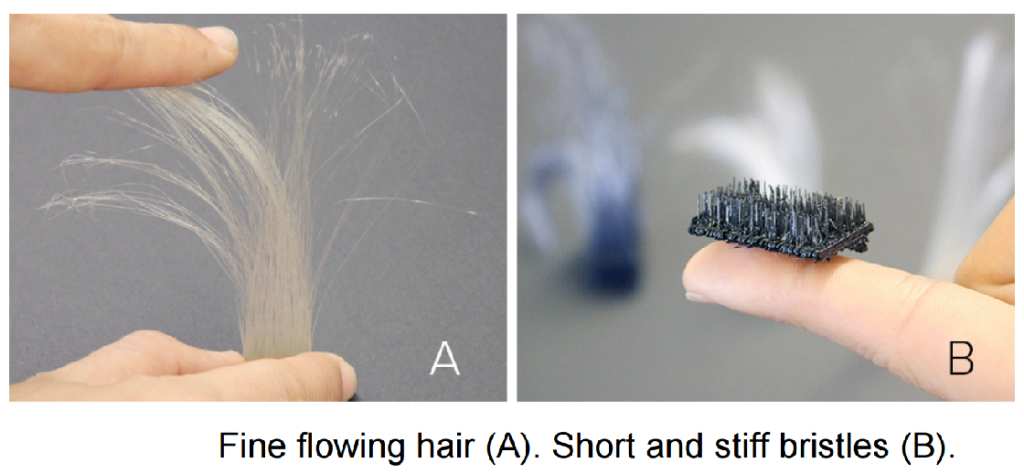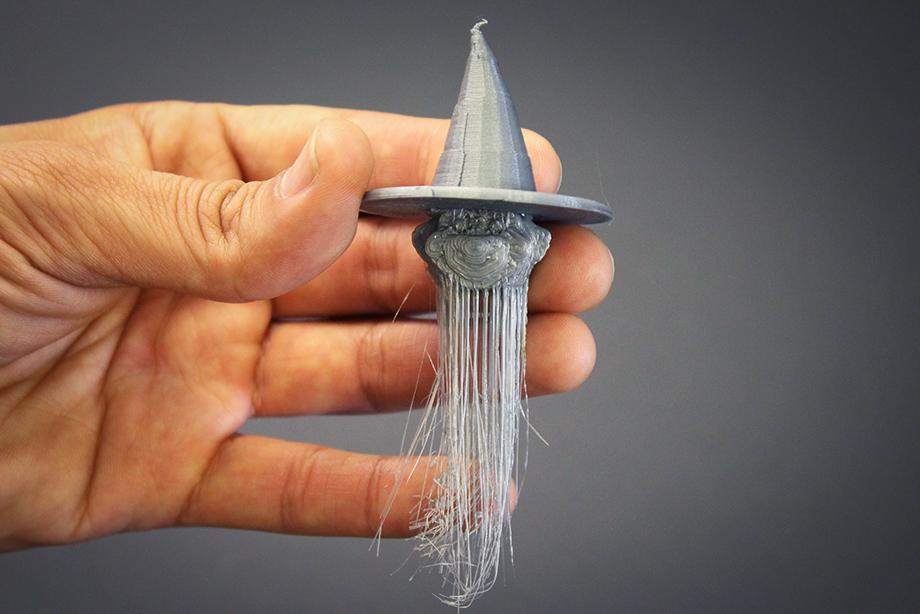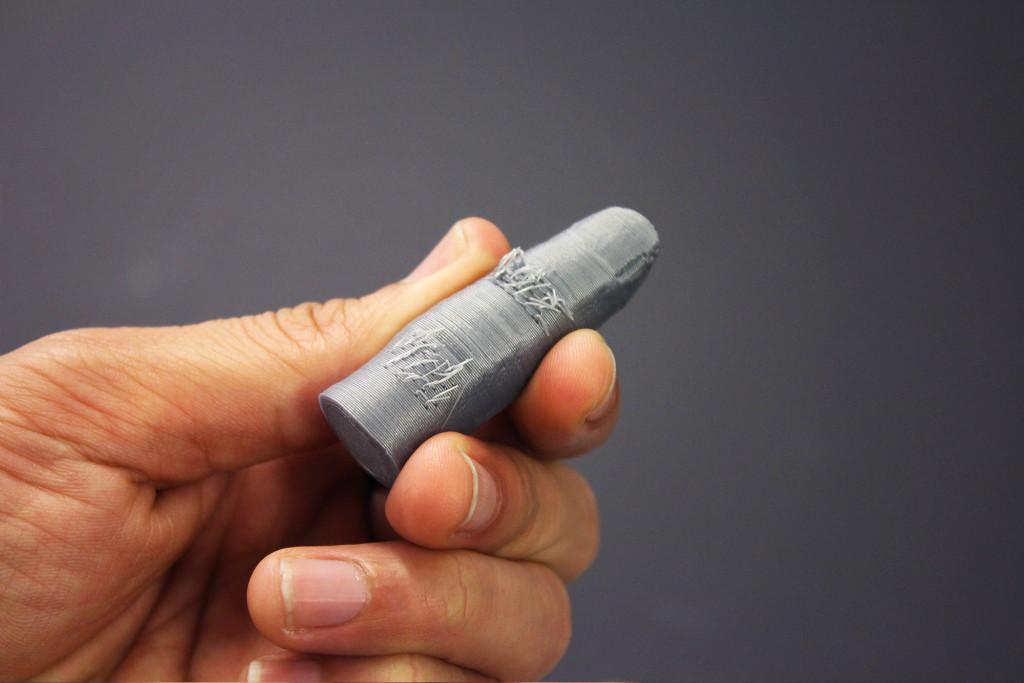Whether it’s an afro, a sleek ponytail, an updo, or a mess of trendy dreadlocks, the different ways in which we all present our locks, manes, and mops are infinite. Hair is more than just those threadlike strands sprouting from follicles all over our bodies. For many it’s a representation of personality, confidence, youth–and even freedom. Spanning much further than just our furry bods, hair, both natural and artificial, has a multitude of uses, from the offbeat to the utilitarian–to but of course, the 3D printed.
Often, some of the most unique innovations are created after a single spark of inspiration hits, seeing one small thing that looks like something else. In the case of a group of researchers at Carnegie Mellon, they were inspired to make ‘hair’ by observing the single strands that sometimes trail behind the glue gun during the finishing of projects.
 While that might be a pesky inconvenience for you as you swat and grab at hot airborne lines of wax streaming in the air, it was a light bulb moment for the research team, comprised of Gierad Laput, Xiang ‘Anthony’ Chen, and Chris Harrison, of Carnegie Mellon University’s Human-Computer Interaction Institute.
While that might be a pesky inconvenience for you as you swat and grab at hot airborne lines of wax streaming in the air, it was a light bulb moment for the research team, comprised of Gierad Laput, Xiang ‘Anthony’ Chen, and Chris Harrison, of Carnegie Mellon University’s Human-Computer Interaction Institute.
In quite a serious paper on the subject, they do also take a quick poke at their technique, referring to it as ‘furbication.’
“This technique extends the capabilities of 3D printing in a new and interesting way, without requiring any new hardware,” state the researchers in their paper, ‘3D Printed Hair: Fused Deposition Modeling of Soft Strands, Fibers and Bristles,’ recently published in UIST ’15.
Outlining their method for making strands, fibers, and bristles, the team points out how they were able to exploit the glue gun string phenomenon, working with similar principles in 3D printing. Users should, according to the researchers, find ‘furbication’ easy to replicate and also work into current 3D printing practices. Users can simply designate to the 3D printer via G-code where they want hair to go in a model, as well as how long, thick, and dense it should be.
The team of researchers used PLA filament with an unmodified 3D printer in the form of an assembled Printrbot’s Simple Maker’s Kit, for which they report having spent around $350. The basic technique consists of growing the hair by extruding bits of the filament and then quickly drawing the extruder away, making the same original stringing effect seen with the glue gun. They report that this routine can be programmed into G-code so that the hair will be fabricated over and over, and with the correct specifications. With different filaments, of course, a variety of colors can even be produced.
 In post-processing, the hair can be cut, blown dry, curled, and braided. To show off their work, they made five different examples:
In post-processing, the hair can be cut, blown dry, curled, and braided. To show off their work, they made five different examples:
- Wizard – featuring a long beard with dense, straight medium hair
- Brush – using straight, stiff bristles
- Troll – showing off a head of long ‘crazy hair’
- Horse tail – long fine hair which can be braided or shaped
- Fingers- hair is short and curly; blown dry to achieve desired effect
While we certainly don’t see this putting Rogaine out of business anytime soon, being able to add hair where it’s needed whether for a 3D printed figurine or a tool with bristles certainly takes care of one more detailing and post-processing facet–not to mention it just looks like fun to try. So, now–yeah, you–drop the glue gun and get to work on your knuckle hair! What are your thoughts on these methods of printing. Discuss in the 3D Printed Hair forum thread on 3DPB.com.
The Carnegie Mellon researchers will present their research on November 11th at the UIST 2015 symposium in Charlotte, NC.
Subscribe to Our Email Newsletter
Stay up-to-date on all the latest news from the 3D printing industry and receive information and offers from third party vendors.
You May Also Like
Why Corrosive Resistant Materials Are Important to the Success of 3D Printing Across Industries
The adoption of additive manufacturing (AM) is accelerating across many major industries. As this technological shift unfolds, the importance of corrosion resistance has emerged as a challenge for 3D printing...
America Makes Announces IMPACT 2.0: $6.6M in New 3D Printing Funding
America Makes, the Manufacturing Innovation Institute (MII) based in Youngstown, Ohio, has announced IMPACT (Improvement in Manufacturing Productivity via Additive Capabilities and Techno-Economic Analysis) 2.0, a project call which will...
3D Printing Webinar and Event Roundup: April 14, 2024
We’re starting off the week’s 3D printing webinars and events at ASTM AMCOE’s 11th Snapshot Workshop and MACH Exhibition. Stratasys continues its advanced training courses, SME is holding a virtual...
AMUK Welcomes Airframe Designs as British 3D Printing Industry Grows
While the UK is not the hub for 3D printer and materials manufacturers as other nations, the country continues to excel at the research, development, and application of additive manufacturing...


































